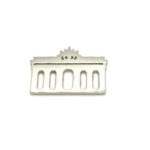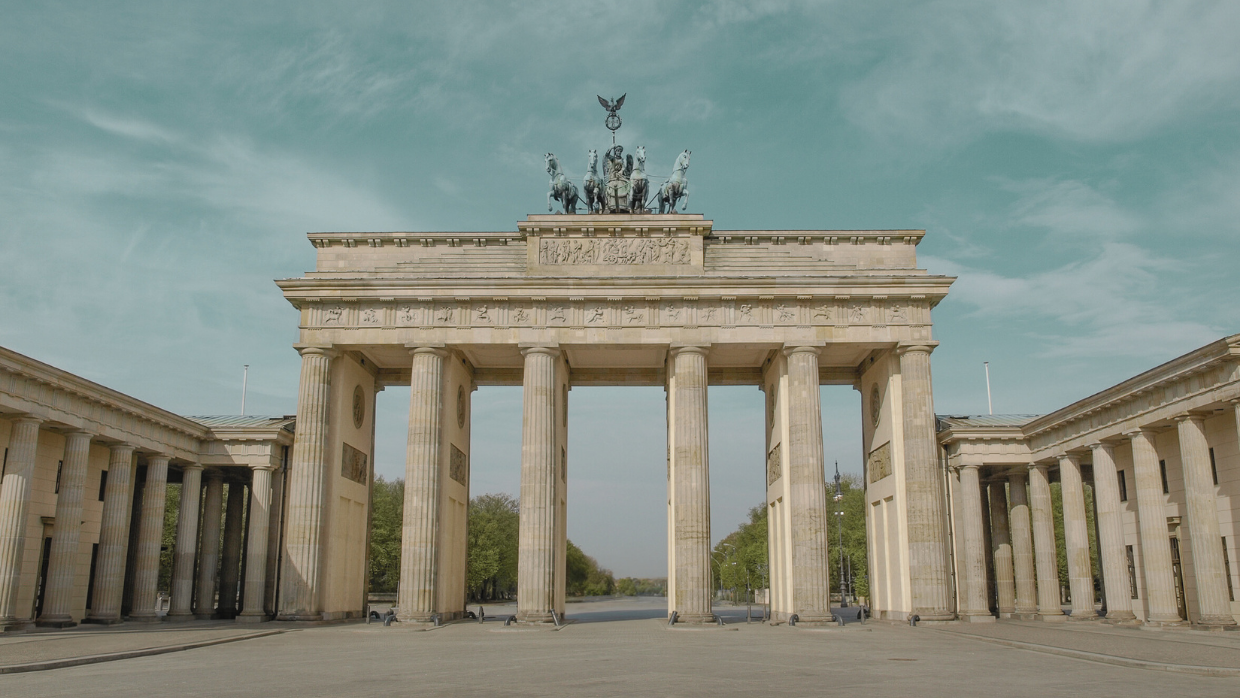Das Brandenburger Tor am Pariser Platz ist nicht nur das bekannteste Wahrzeichen Berlins, sondern auch ein Symbol für Deutschland. Jedes Jahr besuchen deshalb unzählige Touristen das berühmte Monument im Herzen der Hauptstadt.
Nach griechischem Vorbild erbaut
Ursprünglich war das Brandenburger Tor eines von 18 Stadtmauertoren, das in den Jahren 1789 bis 1791 im Auftrag von Friedrich Wilhelm II. errichtet wurde. Es sollte vor allem als Abschluss der Prachtstraße Unter den Linden dienen.
Der klassizistische Sandsteinbau ist der Vorhalle der Akropolis nachempfunden und besteht insgesamt aus zwölf Säulen, die 5 Durchgänge bilden. An den Seiten befinden sich jeweils die Torhäuser. Oben auf dem Tor ist Victoria, die römische Göttin des Sieges. Sie steht auf einer Quadriga, einem Streitwagen, den vier Pferde ziehen.
Brandenburger Tor jahrzehntelang im Sperrgebiet
Im zweiten Weltkrieg wurde das Brandenburger Tor stark beschädigt und gegen Ende der 1950er Jahre wiederaufgebaut. Als man 1961 im geteilten Deutschland die Berliner Mauer errichtete, stand das Bauwerk innerhalb des Sperrgebiets und war nicht mehr zugänglich. Es trennte die Stadt in Ost und West.
 Erst seit dem Mauerfall am 9. November 1989 ist auch das Tor wieder geöffnet. Seither gilt es als Symbol für die Wiedervereinigung der Stadt. Vor allem wegen seiner herausragend geschichtlichen Bedeutung ist es auch auf den deutschen 10-, 20- und 50 Cent-Münzen zu sehen.
Erst seit dem Mauerfall am 9. November 1989 ist auch das Tor wieder geöffnet. Seither gilt es als Symbol für die Wiedervereinigung der Stadt. Vor allem wegen seiner herausragend geschichtlichen Bedeutung ist es auch auf den deutschen 10-, 20- und 50 Cent-Münzen zu sehen.
Treffpunkt für Einheimische und Besucher
Inzwischen hat man das Brandenburger Tor für den Fahrzeugverkehr komplett gesperrt und zu einer Fußgängerzone entwickelt. Es ist ein beliebter Treffpunkt für Berliner und Touristen. Auch Großveranstaltungen finden auf dem Vorplatz regelmäßig statt, wie etwa die riesige Silvesterparty, zu der Besucher aus aller Welt extra anreisen oder die Siegesfeiern der deutschen Nationalmannschaft.
Das berühmte und geschichtsträchtige Hotel Adlon liegt direkt am Brandenburger Tor. Und von einigen der luxuriösen Zimmer hat man einen herrlichen Blick auf Deutschlands berühmtestes Wahrzeichen.
